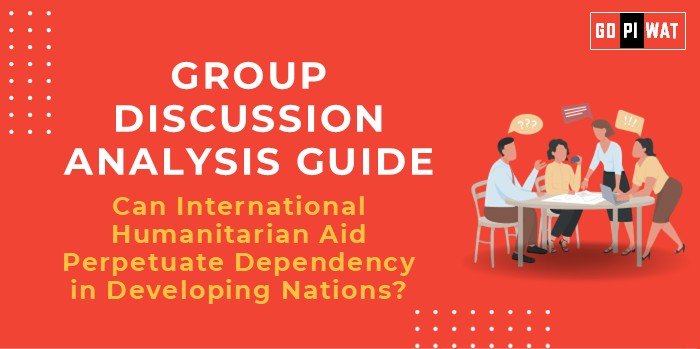📋 Group Discussion Analysis Guide: Can International Humanitarian Aid Perpetuate Dependency in Developing Nations?
🌐 Introduction to the Topic
📖 Opening Context
International humanitarian aid, designed to address emergencies and foster development, often sparks debate over its unintended consequences. A critical question arises: Does aid perpetuate dependency in developing nations?
📜 Topic Background
Humanitarian aid gained prominence post-World War II, with organizations like the UN and NGOs focusing on global welfare. While aid has alleviated crises, critics argue it fosters economic reliance and hinders self-sufficiency. The COVID-19 pandemic highlighted both the importance and pitfalls of such aid systems.
📊 Quick Facts and Key Statistics
- 💰 Humanitarian Aid in 2023: $31.3 billion distributed globally (UN OCHA).
- 🌍 Sub-Saharan Africa: Receives 44% of global aid but reports stagnant economic growth rates in many regions.
- 📈 Aid Reliance Index: 20 countries meet over 10% of GDP through external aid (World Bank, 2023).
- 🏛️ Donor Distribution: The US, EU, and Japan contribute over 50% of global aid funding.
🤝 Stakeholders and Their Roles
- 🌐 Developed Nations and Donors: Provide financial and material support to crisis-hit regions.
- 🏛️ Developing Nations: Recipients of aid aiming for long-term stability.
- 📢 International Organizations (UN, WHO): Coordinate global responses and ensure equitable distribution.
- 📖 NGOs and Civil Society Groups: Implement projects on the ground and advocate for policy improvements.
🏆 Achievements and Challenges
✨ Achievements
- 🌾 Immediate Relief: Aid saved 20 million lives during the 2020 famine in East Africa (UNHCR, 2022).
- 💊 Health Outcomes: Vaccination programs funded by aid reduced malaria deaths by 35% in sub-Saharan Africa (WHO).
- 📚 Educational Gains: 10 million children accessed education via UNICEF’s Global Partnership for Education in 2022.
⚠️ Challenges
- 🛠️ Dependency: 60% of food in some African regions comes from international sources, weakening local agriculture.
- 💰 Corruption and Mismanagement: An estimated $3 billion in aid funds lost annually (Transparency International, 2023).
- 🌏 Global Comparisons: Haiti struggles with dependency, while South Korea transitioned successfully from aid to self-reliance.
🌍 Case Study
- 🇷🇼 Rwanda: Post-genocide recovery illustrates strategic use of aid for development and governance reform.
💡 Structured Arguments for Discussion
- 🛠️ Supporting Stance: “Humanitarian aid plays an irreplaceable role in immediate crisis resolution and long-term recovery.”
- 🛡️ Opposing Stance: “Prolonged reliance on external aid undermines local economies and fosters a cycle of dependency.”
- ⚖️ Balanced Perspective: “While aid addresses urgent needs, it must integrate capacity-building measures to foster independence.”
🎯 Effective Discussion Approaches
🔑 Opening Approaches
- 📊 Global Perspective: “In 2023, $31.3 billion in aid addressed emergencies worldwide, but concerns over dependency persist.”
- 📖 Highlight Case Study: “Rwanda’s strategic recovery demonstrates how structured aid can foster self-reliance.”
⚙️ Counter-Argument Handling
- 🔄 Challenge: “Aid fosters dependency.”
- ✅ Rebuttal: “Examples like South Korea show that structured aid programs can transition economies to self-sufficiency.”
🧠 Strategic Analysis of Strengths and Weaknesses
SWOT Analysis:
- 💪 Strengths: Saves lives, addresses inequality, stabilizes conflict zones.
- 🛠️ Weaknesses: Promotes reliance, mismanagement risks.
- 🌟 Opportunities: Introduce sustainable models, foster partnerships.
- ⚠️ Threats: Geopolitical agendas, donor fatigue.
🏫 Connecting with B-School Applications
📚 Real-World Applications
- 🌍 Aid models relate to corporate social responsibility and global economic policies.
🎓 Sample Interview Questions
- ❓ “What role should public-private partnerships play in reducing aid dependency?”
- ❓ “How can businesses align with humanitarian goals sustainably?”
💡 Insights for Students
- 📈 Explore sustainable aid mechanisms and innovative funding models.


